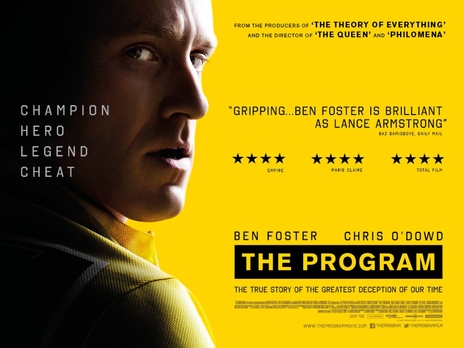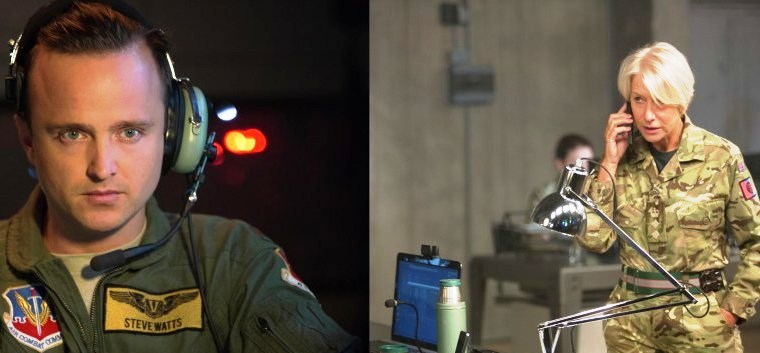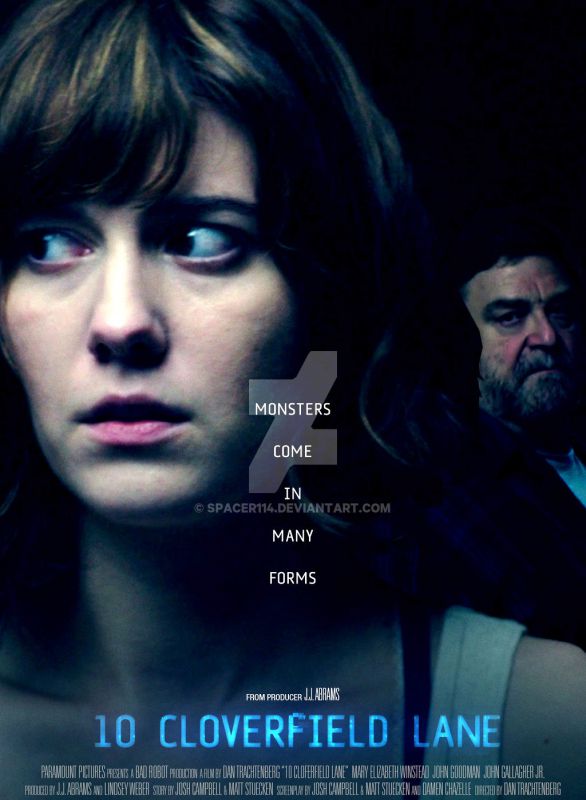![]()
Race, Review: Giving racists a run for their money
How long does it take for an Olympic champion to run 100 metres? Less than 10 seconds. Jesse Owens (1913-1980) was the first American in the history of Olympic track and field to win four gold medals in a single Olympiad. Back in 1936, the attention span of viewers must have been considerably longer than in this age of nano-second technology. Therefore, to make a 2h 14m film on events that occurred 80 years ago, to attract dwindling audiences to cinema-halls and to keep them engaged, must be considered an achievement on its own. Race has pace, and has its heart in the right place.
Young Jesse Owens (Stephan James) becomes a track and field sensation while attending the Ohio State University in the early 1930s. With guidance from coach Larry Snyder (Jason Sudeikis), Owens gains national recognition, breaking numerous records. It is the period when Germany is set to stage the Olympics, and the United States of America is considering boycotting the games, on account of the Aryan supremacy and anti Jewish state policy of Nazi Germany, under Chancellor Adolf Hitler. After heated debates, and a close vote, the sporting associations of USA decide not to boycott the Olympics. Overcoming racism at home and abroad, Owens seizes the opportunity to show Berlin and the world that he's the fastest man alive.
Despite Jesse Owens’s long-standing popularity, only one feature-length film has been made of his life, The Jesse Owens Story (1984), a TV docu-drama starring Dorian Harewood. Owens himself narrated Jesse Owens Returns to Berlin, in which one of the world’s greatest athletes revisited his achievements in the 100 and 200 metre, long jump (a record that stood for 25 years), and relay. This second film was made in 1964, but not broadcast until 1968, because of racism at the major American TV networks. In fact, the documentary provided many Americans with their first real-look of Owens in action. In 1936, that footage would only have screened briefly, in newsreels. And in any case, a whole generation had grown-up after that moment in history.
This version is written by British husband and wife duo Anna Waterhouse and Joe Shrapnel (Lonesome Jim, Frankie and Alice, The Roots of Heaven). It restricts itself to about three years in the life of the man whose real name was J.C. Owens, but who lived with the name ‘Jesse’ because the school-teacher who entered his name in the register heard it so, on account of J.C.’s heavy accent. Most of the narrative is predictable: under-privileged son of a large family with an unemployed father has a natural gift for running, faces discrimination at home and abroad, is mentored by a white coach against all odds, has a child from a woman but falls for a seductress, makes up with his sweetheart and brings home four gold-medals.
Who can you blame if that is how it happened? Waterhouse and Shrapnel’s first draft had some back-story, but length constraints prompted the director to confine himself to Owens’ life from about age 19 to about 22. Adolf Hitler is only a shadowy presence, while the characters of Joseph Goebbels, the Minister for Propaganda, and Leni Riefenstahl, are favoured with good scope. One passing shot of pre-glory Joe Louis losing a boxing bout, saddening his contemporary and later pal Owens, is subtlety personified. There could be serious issues with accuracy and historical perspective, but let the academicians sort those out, not us mere critics.
Shot in Montréal and Berlin, with a cast that has American, British, German, Dutch and Canadian actors, playing black, white and Jew parts, Race is directed by Stephen Hopkins (Predator 2, The Reaping, A Nightmare on Elm Street 5: The Dream Child), a South Africa-born, British educated white. Well, if the Olympics are not about diversity, what is? Talking about the realistic running by the lead actor, Stephen said, “Stephan trained for months. But the other athletes helped him in his training. We did some cinematic tricks. And we had some Canadian Olympic athletes running for him sometimes. But most of it, Stephan ran himself.” (Note how only one letter of the alphabet separates their names, which are essentially the same). One can fault the screen-writers and Hopkins for amalgamating two highly polarised characters and delineating the coach as we have seen a dozen other coaches in sport-based features, both western and Indian, in the last decade or so. It would a there is no escape from basic stereo-typing.
The two merged characters are Avery Brundage and the International Olympic Committtee President, Henri Ballet-Latour, of Belgium. In the film, Brundage takes Owens to Hitler’s box for the customary post-medal handshake, and criticises the chancellor for leaving before they reach the box. Actually, it was Henri Ballet-Latour, who demanded that Hitler shake the hands of all, or none, of the gold medalists. Earlier in the film, Brundage, who goes on a visit to check out ground realities before reporting to the US committee on the reported Jewish purge in Germany (a well shot outdoor scene), insists that all Nazi banners be removed from Berlin’s public buildings. According to authoritative sources, that too was Ballet-Latour, not Brundage.
(Brundage went to the extent of banning Owens from amateur competitions, describing him as a professional, and, after the Olympics, Owens’ first job was as a janitor (!). While Owens was a talented orator and coach, he struggled to support himself and his family for the rest of his life. He raced against horses, and even ran mock races with his friend and boxing legend Joe Louis, to make a living).
Though Montréal doubles for the American locales, it is in his recreation of the Berlin of 1936 that Hopkins scores high, especially the Olympic stadium. “I did not know how important it was to film on-location at the Olympiastadion, until I went scouting it. We shot the scene where Jesse goes to meet Hitler and is rebuffed by him in the actual room it took place.” If there is CGI involved in creating the humungous crowd of spectators, and the ambience, it is very cleverly integrated. He must also be complimented on the attention to detail in the shooting of the sporting events, and the interpretation roles of Goebbels and Riefenstahl.
Stephan James (When the Game Stands Tall, The Book of Negroes, Selma, Undone, Perfect Sisters, Home Again) is a native Canadian who writes his own rap music. His sports activities include basketball, football, soccer, kick-boxing, and track and field. Not bad casting, that. A simpleton with a sense of pride, and easily swayed by emotions, is how we see Jesse Owens through James. Being over-awed, coping with the prospect of a possible losing of an epic competition, feeling guilt-pangs about betraying the woman of his life…James brings these feelings alive.
Jeremy Irons (Reversal of Fortune, The French Lieutenant’s Woman, Moonlighting, Die Hard with a Vengeance, Stealing Beauty, The Man Who Knew Infinity), as Avery Brundage, is saddled with a complex persona: sports-lover, unscrupulous builder or a man of true grit? The film lets him be ‘all of the above’, but tilts the role towards the positive side. Shanice Banton (Canadian, singer, dancer, runner, making a debut) is cast as Ruth Solomon, the woman Owens marries. No running, dancing or singing, but this is a rocking debut. Massively understated and perfectly logical, Solomon comes across as a woman of substance.
Leni Riefenstahl is essayed by Carice van Houten (Dutch, first love is music; Black Butterflies, Black Book, Valkyrie, The Fifth Estate). Riefenstahl was a dancer, producer, director and documentary-maker, who shot the 1936 Olympics with 45 cameras. That film, in two parts, Fest der Völker and Fest der Schönheit, got the highest awards: the gold medal in Paris, in 1937, the first prize in Venice as the world's best film, in 1938, the Olympic Award, by the IOC, in 1939, and, in 1956 it had been classified as one of the world's best ten films. She died in 2003, a few days before her 101st birthday. Carice van Houten is guts and gumption in the role, holding her own against Goebbels, even when forced to stand-in as a mere interpreter, and commanding her huge crew to film every fleeting moment. Double Dutch to her art!
William Hurt (Kiss of the Spider Woman, Children of a Lesser God, Broadcast News, A History of Violence, The Accidental Tourist, Stephen Hopkins’ Lost in Space) is Jeremiah Mahoney, the opponent of Brundage and a staunch believer in the boycott of ‘Nazi Olympics’. There is a strong interior to his tempered exterior. Jason Sudeikis (We’re the Millers, Horrible Bosses, Sleeping with Other People, The Ten, Drinking Buddies, What Happens in Vegas, The Bounty Hunter) wins hearts as the coach Larry Snyder who takes on the establishment, partly by guile and partly head-on. An under-achiever who lost his career to a plane crash, he spares nothing to stand by, and travel with, Owens. In spite of the emotional overdose, it is a standard prop in all such dramas. Sudeikis is effective, without being outstanding. Barnaby Metschurat as Joseph Goebbels (Colours in the Dark, Fair Trade, Russian Dolls, The Spanish Apartment, Anatomy 2) keeps you guessing most of the time, as does the visage of Metschurat. Good propaganda for the actor who plays one of history’s most notorious propagandists.
Watch out for the German jumper competing against Owens, who does the unimaginable, thereby bringing a lump to your throat and making you want to stand-up and applaud. It also renews your faith in humaneness.
Rating: ***1/2
Trailer: https://youtu.be/Ho9KA_JF0sE
Extracted from ‘In Black and White: The Untold Story of Joe Louis and Jesse Owens’, by Donald McRae
Chicago, 4 July 1938
Jesse Owens woke early that Monday morning, on Independence Day. He knew at once that it had come back to claim him. The same sense of dread had followed him from Berlin to Cleveland and, gathering in force, found him in places as faraway as Albuquerque and Havana. It returned at night, sweeping over him as he slept the empty sleep of an exhausted man in the backroom of a black boarding house on the south side of Chicago.
He was just 24, and still the fastest man in the world, but Jesse was already worn out. It no longer mattered that he had not run a real race for nearly two years. He was sick of running. The dread caught him when least expected; he had not anticipated feeling like this when the streets hummed in celebration of his great and unshakable friend, Joe Louis. Yet, that afternoon, Jesse would face Joe in a stunt that now seemed as desolate as it was strange.
Jesse was at his happiest when he thought about everything he and Joe had achieved over the last three years. Ever since the summer of 1935, when they became the two most famous Negroes in America, the most renowned black men in the world, Jesse and Joe had been more than just friends. They were a team, two brothers from Alabama, the perfect match of a blistering runner and an ice-cold fighter.
Jesse pulled out the newspapers he'd shoved into his suitcase. No matter how hard he tried, he rarely got round to reading much. Jesse kept on collecting papers, though, sometimes tearing out clippings for the scrapbooks he and Ruth had started before they were even married. Lately, as the piles of cuttings grew and the newest scrapbooks remained untouched, he had begun to limit his quick scour to material he might use in his speeches.
Having conquered his childhood stammer, he was becoming increasingly accustomed to talking through a microphone to the crowds who turned out to watch his exhibition races. Jesse always spoke in rousing terms, mostly about the four gold medals he had won in the 1936 Berlin Olympics or the way in which Joe Louis inspired every Negro in America. Jesse liked to pepper his chat with uplifting quotes but it wasn't easy finding encouraging copy in the white newspapers.
Even though the papers were full of Joe Louis, their reports were often twisted. Jesse did not always recognise his friend in print. Joe could fight better than anyone on the planet but, no matter how hard he hit a man between the ropes, he was the softest guy you'd ever meet. The press turned him into something different.
Jesse began to underline some sentences. For Dan Parker, of the New York Daily Mirror, "Louis has finally come into his estate as a great world's champion. If anyone doubts his greatness after his masterful job last night, he's plain plumb prejudiced." Yet Henry McLemore, the Universal Press columnist, was appalled by the sight of "this ruthless, unmerciful killer". Louis had become "a jungle man, as completely primitive as any savage, out to destroy a thing he hates".
O.B. Keeler's report in the Atlanta Journal turned into a bleak lament. "Joe Louis is the heavyweight champion of the world and, so far as this correspondent can see, there is nothing to be done about it. Our fastest runners are coloured boys, and our longest jumpers and our highest jumpers."
Even if his last competitive race had been on 15 August 1936, when he completed the third leg of a meaningless relay for an American team in London, Jesse had not forgotten what it felt like to be a champion. He was only 22 when American officials banned him, a day after that London race. Jesse was branded a "professional" - which, on the track, was a word even more damning than "nigger". Sometimes he thought his heart would crack if he considered the full and bitter truth. He would never run or jump in competition again . . .
The two men sat on a hard wooden bench in the front row of American Giants Park. Jesse had pulled on a crimson vest and white shorts. Joe, despite having removed his green jacket beneath the hot sun, still wore his riding kit. The fighter ate his second ice-cream of the afternoon. Joe, like Jesse, was 24 years old. He seemed oblivious to the fact that almost 7,000 pairs of eyes focused on him.
"Feelin' confident, champ?" Jesse joked as the heavyweight brought the mound of melting strawberry to his mouth.
Joe looked up in surprise, before suddenly remembering that they were only 10 minutes away from the race. "Well," he drawled, "one more o' these babies ain't gonna make no difference . . ."
Pink ice-cream trickled down the sides of the cone. Joe sucked in a blob from the top before he cleaned up the cone with his tongue. Joe's friend, Mack Jones, burst out laughing. "My money's still on you, Joe," Mack yelled as he clapped the champion on the back.
The race was scheduled for three o'clock. Joe had spent the first hour at the ballpark signing his name and acknowledging every flush-faced fan with deadpan courtesy. He didn't mind. An adoring crowd at a Negro League double-header was nothing compared to the crush that usually engulfed him as people rushed to him as if he was some kind of saviour. At least these folk allowed him to eat a couple of ice-creams and talk to his buddy.
"How the Alabama boys do yesterday?" Joe asked as they watched the last Birmingham Baron batter walk slowly back to the dug-out at the end of a 12-2 hammering by the local American Giants. He knew Jesse had sprinted through yet another exhibition in the midst of a Sunday afternoon doubleheader between the two teams.
"They lost both," Jesse said.
Joe had been born to sharecroppers at the foot of the Buckalew Mountains in Alabama. Jesse came from Oakville, a tiny sharecropping community 10 miles from the nearest town of Decatur in northern Alabama. "We better put on a better show than Birmingham," Jesse said.
"Yeah," Joe grunted.
"You gonna run in that?" Mack asked, gesturing towards Joe's dressage outfit.
"Sure," Joe said. "A vest and shorts ain't gonna make me any faster."
They pressed their way through the crowd until they reached the edge of the field. The spectators clapped rhythmically as a tinny microphone introduced "the two most famous Negroes in America". Jesse and Joe looked at each other and almost smiled. It was race time.
"You ready, Joe?" Jesse asked as they walked towards the makeshift starting line.
Joe nodded, and then asked his own question: "You still want to do it this way?"
"It's what they want," Jesse said.
"OK," Joe shrugged. "Let's give 'em what they want."
Deepening silence
The Olympic champion was 5ft 10in tall and weighed a lean 165lb. His legs were powerful, bursting with all the muscled spring and strength which enabled him to jump further and run faster than any man alive. Joe, meanwhile, had the body to match his imposing title. The heavyweight champion of the world was 6ft 1in and weighed 205lb. His neck, shoulders and back looked massive, his chest and stomach a brown wall of muscle beneath his white shirt. He had no need to run. He could just stand and punch. Joe liked moving forward steadily, with the sticky resin of the ring floor making him believe it was impossible he would ever fall.
Jesse skipped down the oval turf with a typically light step. It no longer mattered if he raced against a dog or the heavyweight champion of the world. Jesse was always ready for the track.
They lined up alongside each other. In the deepening silence Jesse arched his back and readied himself for an explosive start. A half-crouching Joe looked like a weary boxer waiting for the last-round bell.
At the sound of the starter's gun Jesse leapt forward with a jerk. After a few long strides he tripped over his tangled feet. It was a clumsy fall, a hammy piece of acting even to the screamers high up in the cheap seats. Jesse Owens was down, as helpless as any man struck low by the Brown Bomber.
Joe ran his hardest, his legs thundering down the channel in a way they never did on one of his dawn runs. He was halfway to the tape by the time Jesse picked himself up. The gap was too wide. Jesse could not catch the champ. He crossed the line close behind Joe. The crowd rocked with delight. The World's Fastest Man had stuck to his new script.
Jesse stretched out his hand as Joe turned towards him. The fighter pulled him in close, as if consoling an opponent in defeat. They held each other for a moment, their heads bowed. Jesse spoke softly. "You ran real well, champ."
"Yeah," Joe said, his face empty and still.
They broke apart. Joe kept his head down as they walked back towards the stomping crowd. Jesse lifted his right hand and, beneath a clear blue sky, smiled his most brilliant smile. They had made it. They had both risen and fallen and risen again. They were icons who had come a long and dizzying way from the summer of '35 when, as a couple of 21-year-old Negro kids, they had set out together on the greatest journey in sporting history.


























